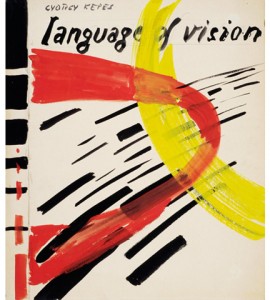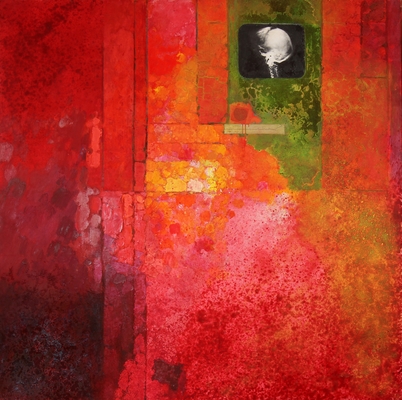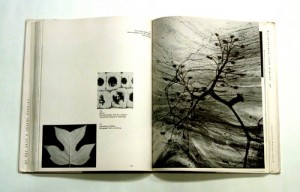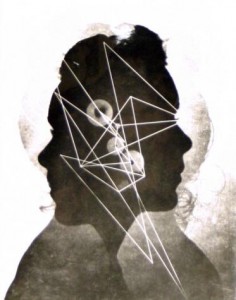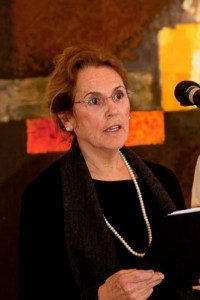The Armadillo Central team was delighted to be invited to the opening of The Kepes Institute, Museum and Cultural Centre, in the historic and picturesque town of Eger in Hungary, a couple of hours from Budapest.
The event, which took place on March 1st 2012, was attended by the town’s Mayor, other local dignitaries and the national press as well as by Hungarian celebrities and arts professionals, collectors and artists from all over the world.
Istvan Karczary, the Institute’s Advisory Board Director, highlighted the legacy of György Kepes, whose lifetime’s work is showcased within the newly renovated and artfully designed building. Hungarian born Kepes, who emigrated to the USA after a few years working and living in various European cities, is widely acknowledged as one of the most influential theorists and educators in the field of visual arts of the 20th Century. He was also a renowned painter, photographer, designer, visual artist and writer. The Institute features a comprehensive selection of Kepes’ work, including paintings, photographs, light installations and artefacts which are exhibited alongside pieces by his colleagues and students.
Márton Orosz, the first fellow chosen by the Hungarian György Kepes Fellowship for Advanced Studies and Transdisciplinary Research in Art, Culture and Technology, is writing a comprehensive monograph on Kepes. “With a lifelong career in the US, Kepes was one of the first 20th Century artists to recognise the new possibilities to arise from scientific thinking within the arts. He founded a new visual language that heralded a change in the human relationship with environment and inspired complex cross-disciplinary collaborations which continue to this day.”
 The Institute provides state of the art facilities for cultural and educational events as well as exhibitions. It aims to promote an international dialogue where creative work can take place stimulated by the multifaceted contributions and achievements of György Kepes and his ‘school’. This is to be enriched by temporary exhibits of important contemporary artists’ work, delivered in the ‘Kepes spirit’. The Centre is designed to inspire and engage emerging talent in art and design, as well as in the sciences, through an ongoing educational dialogue and will serve as a catalyst for both local and international collaborations.
The Institute provides state of the art facilities for cultural and educational events as well as exhibitions. It aims to promote an international dialogue where creative work can take place stimulated by the multifaceted contributions and achievements of György Kepes and his ‘school’. This is to be enriched by temporary exhibits of important contemporary artists’ work, delivered in the ‘Kepes spirit’. The Centre is designed to inspire and engage emerging talent in art and design, as well as in the sciences, through an ongoing educational dialogue and will serve as a catalyst for both local and international collaborations.
 The permanent exhibit entitled The New Landscape follows the artistic periods of György Kepes with an emphasis on light as his main concern and source of constant inspiration. Kepes considered light the essential and richest creative medium, with symbolic properties which could help reconstruct the lost unity and harmony between man and nature. Kepes’ collected works are focused on his multi-layered involvement in the arts and sciences and most particularly their interconnectedness.
The permanent exhibit entitled The New Landscape follows the artistic periods of György Kepes with an emphasis on light as his main concern and source of constant inspiration. Kepes considered light the essential and richest creative medium, with symbolic properties which could help reconstruct the lost unity and harmony between man and nature. Kepes’ collected works are focused on his multi-layered involvement in the arts and sciences and most particularly their interconnectedness.
The Institute chronicles Kepes’ work from the start of his career. He studied traditional painting with István Csók, evolving to avant-garde art in the 30s, first through the Work Circle (Munka kör) of Lajos Kassák, then as a colleague of László Moholy-Nagy in Berlin. This period is well represented by his photographs of extreme perspectives and socio-urban themes: these have a timeless resonance which remains utterly relevant today. Kepes’ New Bauhaus school period in Chicago follows, illustrated by his cameraless photograms which garnered high praise in the USA. As the Head of the Colour and Light Department, he developed ground-breaking seminars and concepts including his famous camouflage technique. Much of this early research was published in his first book, Language of Vision.
Kepes was later invited to MIT to teach visual design in the School of Architecture and Planning, where he eventually became the first Institute Professor. During this period his painting style shifted to abstract expressionism. He applied sand into the paint to create motifs on the canvas and add to the work’s individual character. Kepes was also known for his stained-glass window designs, murals and light installations. Although closely related to the paintings, these form a separate group, which is explored in models and drawings of constructed and planned works (his early programmed kinetic light mural for KLM in New York and stained glass windows for St Mary’s Cathedral in San Francisco for instance). These offer insights into the design and production phases of his work.
To further investigate Kepes’ lifelong career, one can browse through book cover designs, correspondence with other well-known and contemporary artists and other documents, including drawings from his environmental and urban planning projects. His theoretical works are presented through his writings to complete this section.
Kepes’ articles and books deal with the parallels between art and science and also analyse the psychological process of vision. The New Landscape in Art and Science and the Language of Vision, together with his Vision and Value series have been published in many languages and are an integral part of Architecture, Art and Design school curricula today. The final element of the permanent exhibition features Kepes’ MIT period. As the founder of the Center for Advanced Visual Studies (CAVS) and its first director, Kepes surrounded himself with Fellows and students between 1967 and 1974. Scientists and engineers were among the first, eager to contribute to creating social change through their art. Some of the fellows working at the centre were Otto Piene, who became the Director after Kepes retired, Stan Van der Beek, and Nam June Paik. Also included in the Kepes exhibit, three of his closest students pay their respects: Michio Ihara, Alejandro Sina and Antoni Muntadas.
Kepes was a resident of the City of Cambridge in Massachusetts for most of his life. Kepes and his wife, British born Juliet (née Appleby) – an artist in her own right, author and recipient of the Caldecott Award for Children’s literature – both contributed much to the cultural and intellectual life of the city. The enamel murals at the Morse School in Cambridgeport are an example of their work together.
Text: © Emma Boden, 2012, with thanks to Márton Orosz.
All photos: © Zoltán Kerekes, 2012, except where specified.
Find out more about The Kepes Institute






